The deployment of traditional tags and the data gathered from recaptured billfish provides valuable scientific data to further understand growth rates, migratory patterns, habitat utilization, and post-release survival rates. Tag and release data also provides valuable information for stock assessments that are instrumental in a time when industrial longlines represent the largest source of marlin mortality. This valuable data, much of it impossible to measure without the use of traditional tagging, provides the groundwork for conservation-minded policy, scientific advancement, and gives insight into the demographics and socio-economic benefits generated from billfishing.
Información en Español – Descargar Ahora
• Who’s idling the boat forward?
• Who will be controlling the billfish in the water?
• Where is the ideal tagging location on the boat?
• Environmental conditions to consider?
• Who is tagging?
You can purchase both through TBF’s shop, but you can also manufacture your own tagging stick if needed.
Refer to our “Proper Tagging Techniques” for a how-to guide on billfish tagging.
Submitting these tags directly through the online database is the most reliable and efficient method to submit tags.
Each purchased tag also comes with a physical tagging card that can be completed and mailed to our TBF office if needed.
Let’s start with the anatomy of the tag itself. As seen below, the billfish tag has three major components, the tag head, a monofilament leader, and the tag body.


For years, TBF has funded and participated in satellite tagging expeditions. This style of tagging is harder to execute than traditional tagging, but the real-time data provided by satellite tags is priceless. If all goes well, one satellite tag can provide researchers with information on location, migration patterns, habitat range, and vertical movement for up to a year!
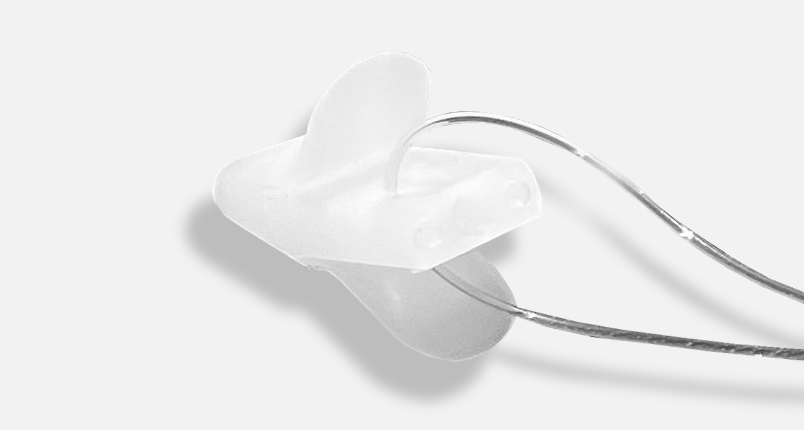
The tag head is composed of surgical grade material that can be left in the fish without causing harm.
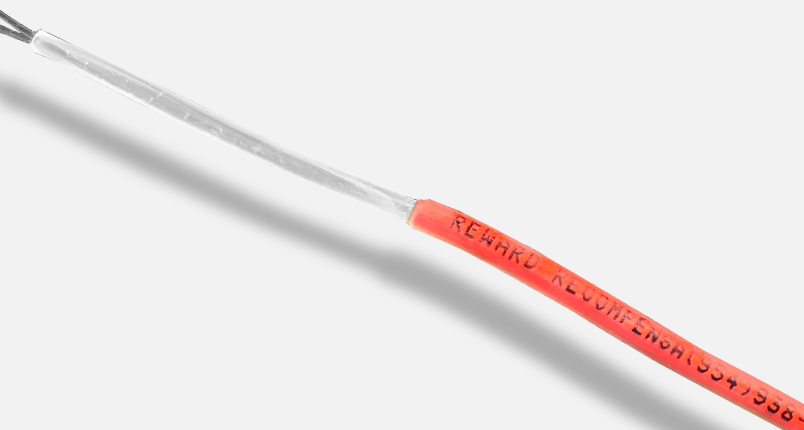
The tag piece with the clear plastic (orange) coat is what will be removed from the billfish in the event of a recapture.
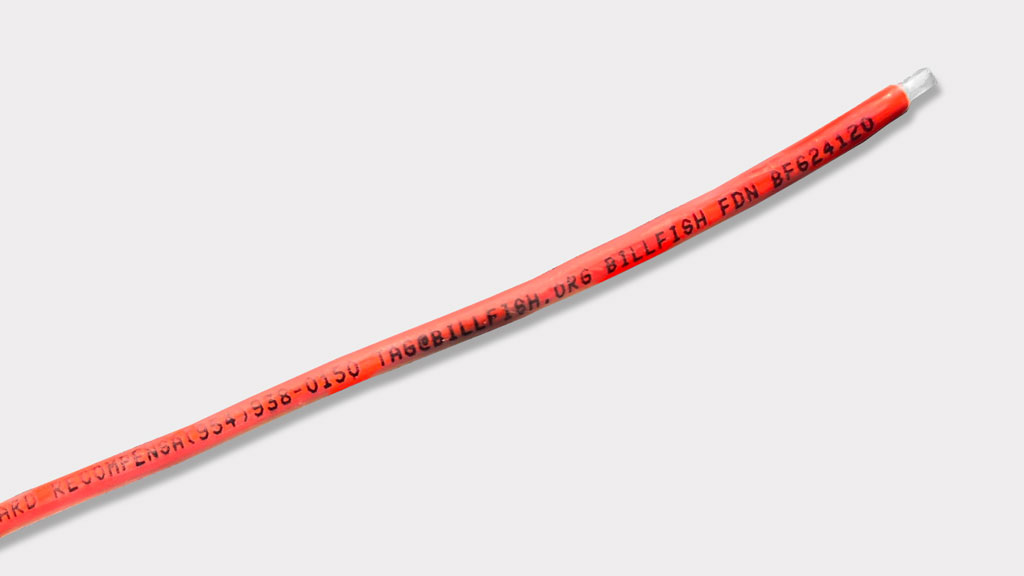
Each tag has a unique six-digit ID code that gets uploaded to our database once it has been deployed.
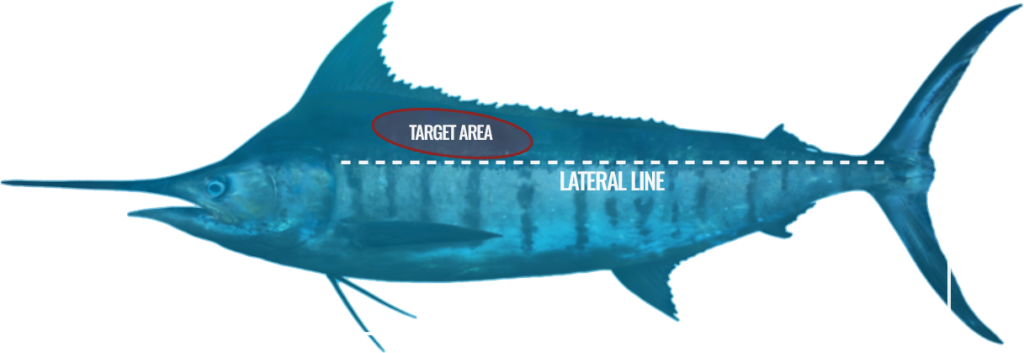
NEVER remove the fish from the water. This can result in fatal damage to the fish for two reasons. Excess rubbing and drying can result in the loss of the protective slime coating found on the surface of the fish. Without this protective covering, the fish becomes susceptible to bacterial infections and parasites. Additionally, the skeleton of a billfish is designed for the buoyant conditions of the ocean. Removing the fish from the water, even onto a boat’s gunnel, causes the skeleton to come under the full strain of gravity, which can damage the fish’s skeleton and internal organs. Keep your fish wet!
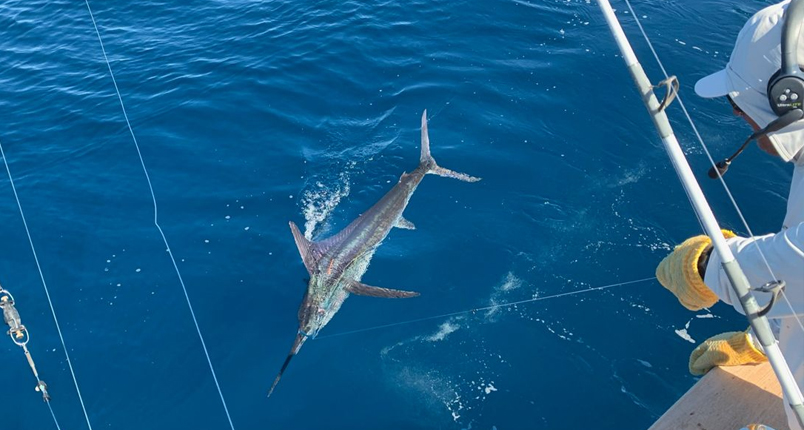
Ensure the conditions on and off the boat are safe, and everyone on the boat is aware of the upcoming tagging process. Safety is of the utmost importance.
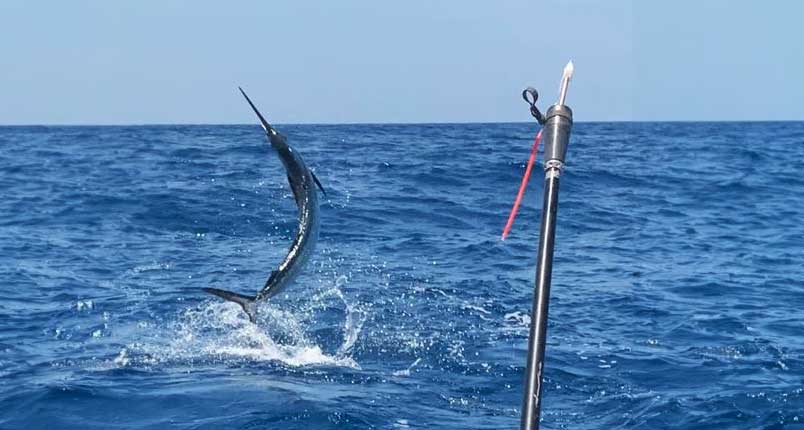
Make sure you have an assembled tag and tag stick ready for deployment, and the corresponding TBF tag card accessible to fill out after tagging.
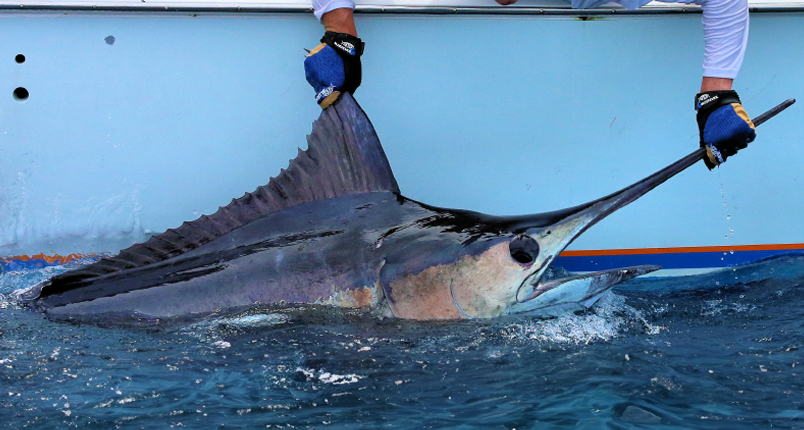
Idle the boat forward and secure the billfish boatside by controlling the bill and body, making sure to keep the billfish in the water at all times. Do not pull hard on their dorsal fins!

It’s time to tag the billfish. Locate the dorsal muscle well behind the head and gill plates, above the lateral line and away from all vital organs.

Using a firm, well-aimed stroke, place the applicator against the fish’s flank and push, inserting the tag until the stopper assembly is pressed against the fish.
Please Read: It is not necessary to use a great deal of force to insert the tag. It is vitally important the tag be placed in the proper zone. Improper tag placement or tagging too hard can result in serious injury to the fish. Carelessly and quickly tagging a fish, known as speed tagging, often results in injury, so take your time! Never attempt to tag a jumping or thrashing fish. This will be not only dangerous for the health of the billfish, but for you too!
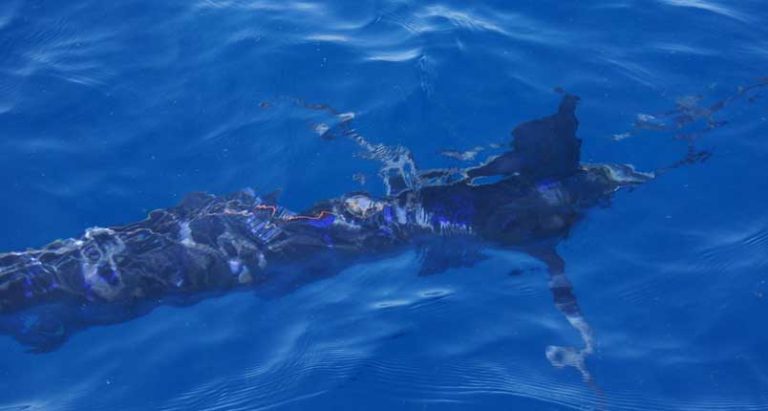
The fish should be released by removing the hook or cutting the leader as close to the hook as possible. It is recommended that an exhausted fish is revived by towing it slowly forward before release.
Note: This can sometimes take a couple minutes or more.

Please enter the tag information online at www.tagbillfish.org or fill out a tag card and mail it to The Billfish Foundation.
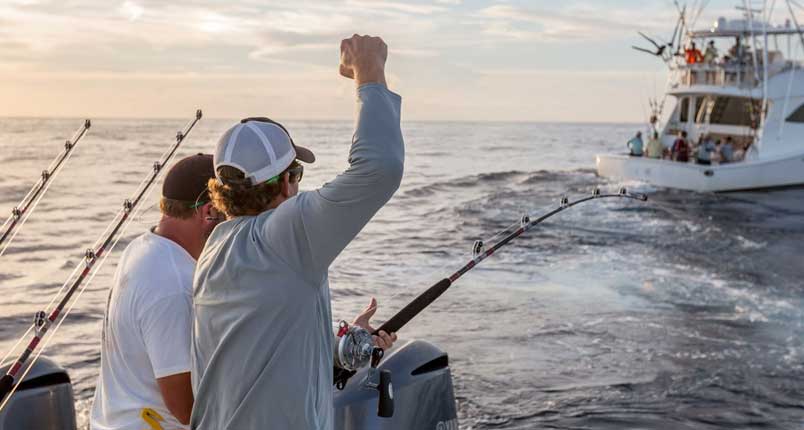
To be eligible for our International Tag & Release Competition, tag and release records must be submitted by the deadline specified.
(November 15th of each year)
If you catch a billfish, that’s already an incredible experience. Now if you catch a billfish with a TBF tag in it, that’s a whole new level. With less than 100 of these “recaptures” occurring annually, these experiences are incredibly rare, but their value to TBF is incomparable. Tags previously placed on billfish are not always easy to find and in many instances have been in the fish for an extended period of time. Various forms of marine growth often attach to exposed portions of the tag, making the bright color of the streamer difficult to recognize. Therefore, before releasing every billfish that you catch and release, you should carefully examine the billfish and make sure there are no tags.
For recaptures, TBF is provided with two timestamps of one fish at different locations, thus providing researchers with comparative data that can be utilized to better understand key habitats, migration patterns, and stock levels of fish in certain areas. Here at TBF we refer to recaptures as “closing the loop”, and it’s one of the most valuable pieces of data we collect.
If you catch a billfish, that’s already an incredible experience. Now if you catch a billfish with a TBF tag in it, that’s a whole new level. With less than 100 of these “recaptures” occurring annually, these experiences are incredibly rare, but their value to TBF is incomparable. Tags previously placed on billfish are not always easy to find and in many instances have been in the fish for an extended period of time. Various forms of marine growth often attach to exposed portions of the tag, making the bright color of the streamer difficult to recognize. Therefore, before releasing every billfish that you catch and release, you should carefully examine the billfish and make sure there are no tags.
For recaptures, TBF is provided with two timestamps of one fish at different locations, thus providing researchers with comparative data that can be utilized to better understand key habitats, migration patterns, and stock levels of fish in certain areas. Here at TBF we refer to recaptures as “closing the loop”, and it’s one of the most valuable pieces of data we collect.
Follow the steps below to ensure a seamless recapture experience.
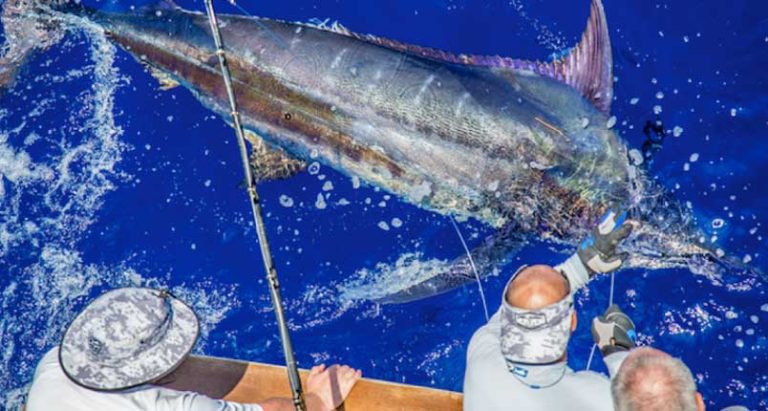
The first thing to do is to ensure the conditions on and off the boat are safe, and everyone on the boat is aware of the upcoming tag removal process.
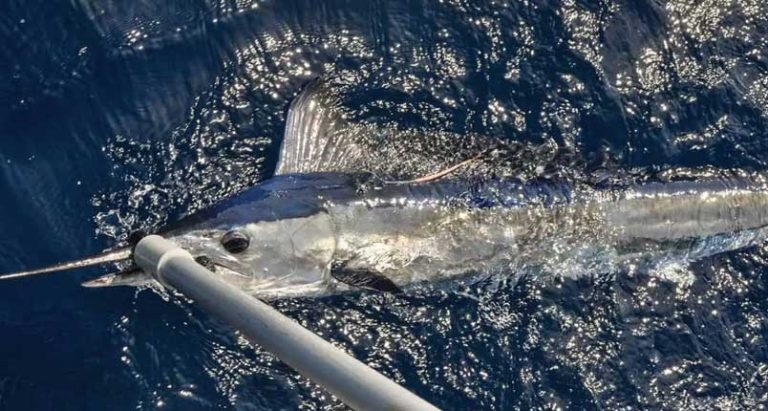
Idle the boat forward and secure billfish boatside by controlling the bill and fish, making sure to keep the billfish in the water at all times. it’s time to ensure the tag is within reach.

Get a firm grip on the orange tag streamer, and cut the monofilament connection using a knife or scissors.
Make sure to remove only the orange tag body and allow the tag head to remain within the fish. Do not pull the tag from the fish, as this can cause damage to the billfish.

Collect the tag and safely store until the fish is released. With the fish still boatside and secure, take a measurement from the bottom of the jaw to the fork in the tail and estimate the weight of the billfish.

Make sure to record the location of the fish to increase accuracy of scientific data collected.
For recaptures, TBF is provided with two timestamps of one fish at different locations, thus providing researchers with comparative data that can be utilized to better understand key habitats, migration patterns, and stock levels of fish in certain areas. Here at TBF we refer to recaptures as “closing the loop”, and it’s one of the most valuable pieces of data we collect.
Refer to our Proper Tagging Techniques page and make sure to report the new tag (including the old tag number) within our online database or through the physical tag cards.
Safely release the fish and contact us with the following information from our Recapture Checklist.
BF_______
COORDINATES IF AVAILABLE
EXCELLENT, GOOD, FAIR, DEAD
ESTIMATED OR MEASURED
ANGLER, CAPTAIN & MATE
WE WILL PROVIDE YOU WITH LIMITED PREVIOUS TAGGING INFORMATION SO YOU CAN COMPARE*
*Orphan Tags: Unfortunately, there are circumstances when a billfish is tagged but not reported to TBF, referred to as orphan tags. In these circumstances, we will not be able to provide you with the original tagging information. Orphan tags fail to provide the full extent of a fish’s journey, and unfortunately provide no insight into the fish’s history. To avoid this, be sure to record and submit the fish data via our application or on the card immediately.
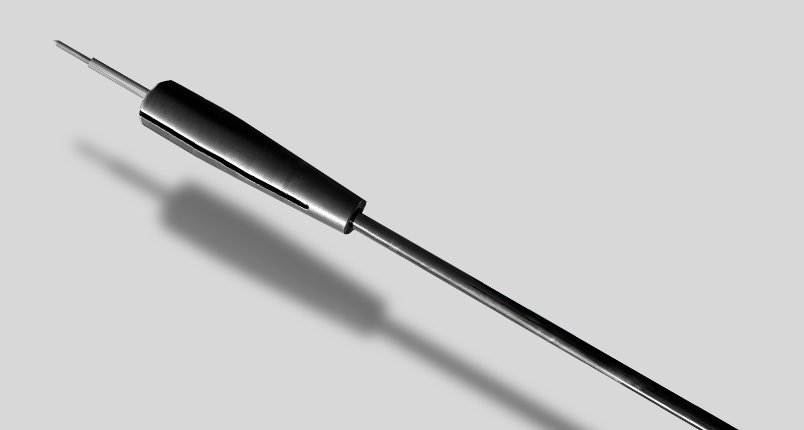
Remember, you can buy tagging sticks, tags, and more directly from our online store. Every purchase goes towards the conservation efforts of The Billfish Foundation.
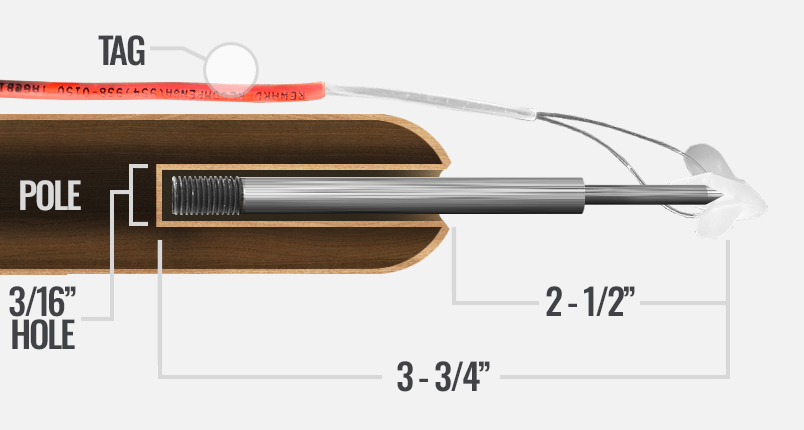
The best home-made sticks are made from old broom or mop handles. Find one made of hardwood and about 1.5m (~4.5 ft) long and 2.5cm (1 in) in diameter. Then, using a 5mm drill bit, drill a hole in the tip of one end of the stick until the tagging applicator protrudes roughly 6cm (2.5 in). Place the tag applicator within this hole and use a good epoxy to secure and seal it.
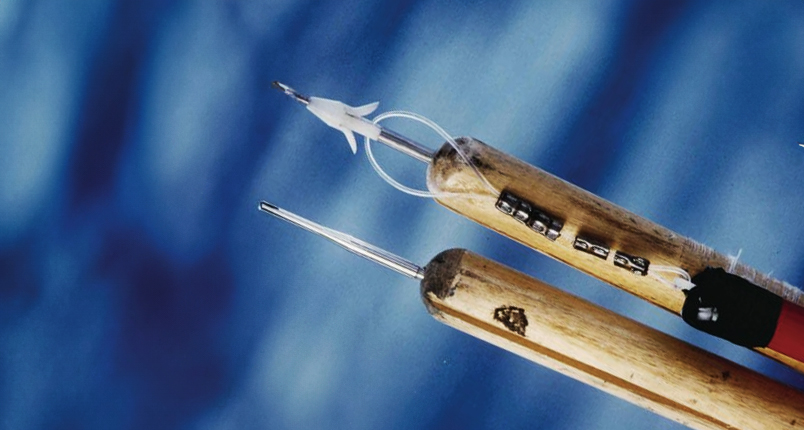
Although we encourage our community to turn their efforts toward billfish conservation, we also accept data on a limited number of other Highly Migratory Species (HMS), specifically bluefin, yellowfin and bigeye tuna.
Please note that while we appreciate efforts to tag any pelagic species, TBF is only interested in billfish and tuna species being tagged, specifically with TBF tags. If you catch a tuna and plan to tag and release it, you still must follow proper tagging procedures to ensure the wellbeing of the fish. As always, make sure to record as much information as possible before submitting your tag cards and try to submit all data in a timely manner.
Enter your email address here to stay up to date on the latest billfish news.

Working worldwide to advance the conservation of Billfish & associated species to improve the health of oceans & economies.

©2025 The Billfish Foundation, All Rights Reserved